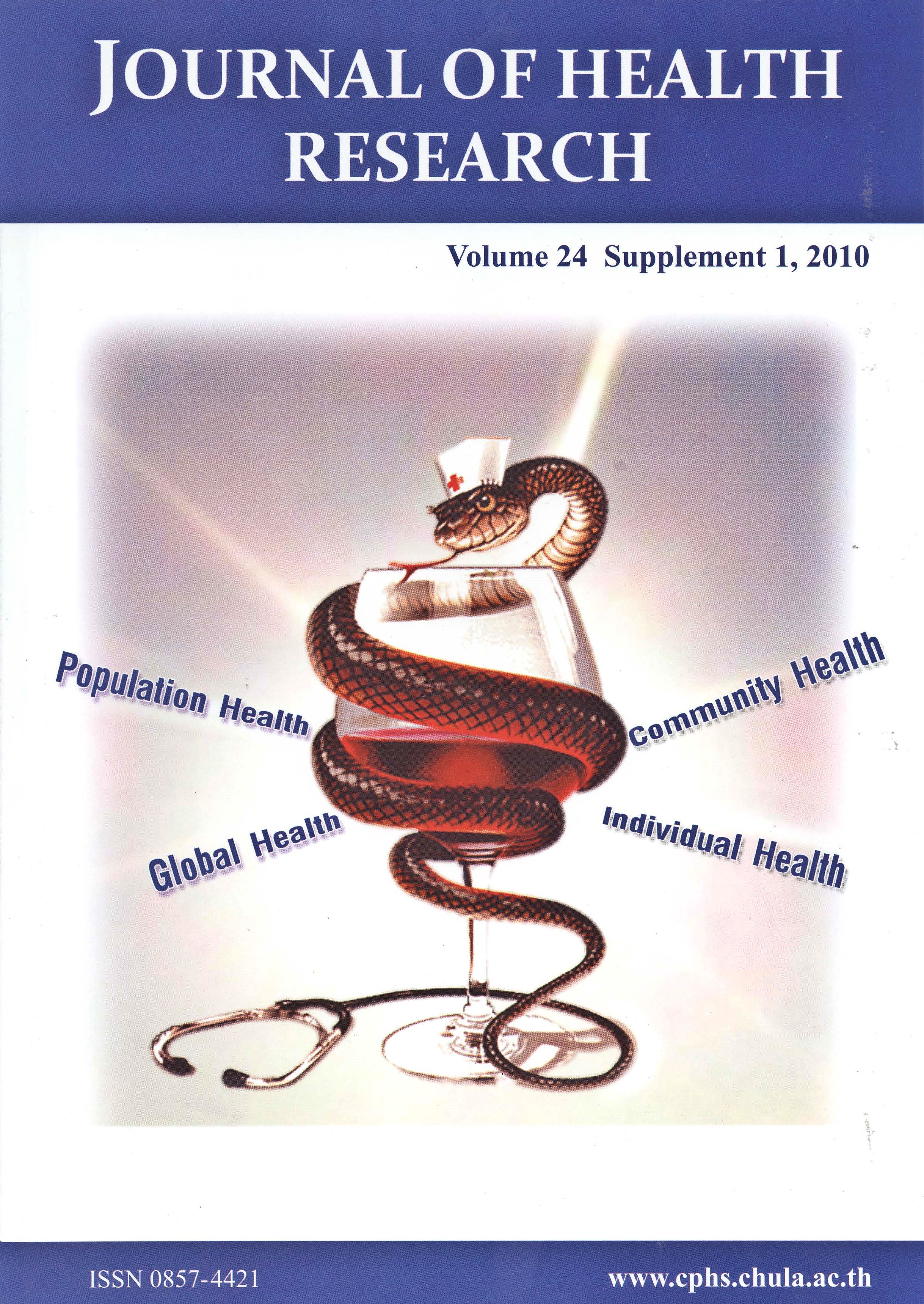Prevalence of G6pd Deficiency in Malaria Endemic Area: Case Study in Bongti Sub-District, Sai Yok District, Kanchanaburi Province, Thailand
Keywords:
prevalence, G6PD deficiency, malaria, endemicAbstract
Glucose-6-Phosephate Dehydrogenase deficiency affects over 400 million people worldwide. Its distribution varies among different geographic regions and population. The high prevalence of G6PD deficiency correlates highly with geographical areas endemic to malaria. This leads to the hypothesis that G6PD deficiency confers protection against malaria. Purpose of this study is to investigate the prevalence of G6PD deficiency in Sai Yok district, Kanchanaburi province, Thailand, a malaria endemic area. We surveyed 102 participants from February to August 2006. The survey assessed demographic data, current illness, malaria knowledge, malaria infection history, symptom, medication and prevention by using questionnaire and in-person interview. Blood samples were collected from all participants for malaria diagnosis and G6PD deficiency screening test. The majority participants were Thais, followed by Karen and Burmese which composed of 39.2% male and 60.8% female. A hundred cases had malaria knowledge and 88 cases had malaria infection history. The most prominent symptom was shivers (80.4%) every other day (56.9%). All of the infected participants used the treatment services at a drug store but 70.6% also used medication from malaria clinics. The preventative measures were done by all participants; bed net is majority prevention (72.5%). The results from malaria diagnosis gave negative result (no parasite) in all specimens which may cause by a small amount of rainfall during the study period. G6PD deficiency screening test showed that the G6PD deficiency cases in Bongti sub-district was 15.69% which was higher than other previous studies. The high prevalence of G6PD may reflect the selective pressure from malaria infection. The percentage of G6PD deficiency in male group (20%) was higher than female group (12.9%), it may be caused by G6PD deficiency is an x-linked recessive disorder, therefore, G6PD deficiency affects mainly in male. There is no statistically significant difference among infection cases and the number of infection between G6PD and non-G6PD deficiency group. From this study, it is still unclear whether G6PD deficiency can directly protect malaria infection because very small numbers of G6PD deficiency cases were included.Downloads
Published
2018-11-23
How to Cite
Theerathananon, W., Francois, J. J., Zongram, O., Pumpaibool, T., Hounnaklang, N., Seugorn, A., Siripoon, N., Harnyuttanakorn, P., & Kanchanakhan, N. (2018). Prevalence of G6pd Deficiency in Malaria Endemic Area: Case Study in Bongti Sub-District, Sai Yok District, Kanchanaburi Province, Thailand. Journal of Health Research, 24(Suppl. 1), 55–62. retrieved from https://he01.tci-thaijo.org/index.php/jhealthres/article/view/157020
Issue
Section
ORIGINAL RESEARCH ARTICLE







